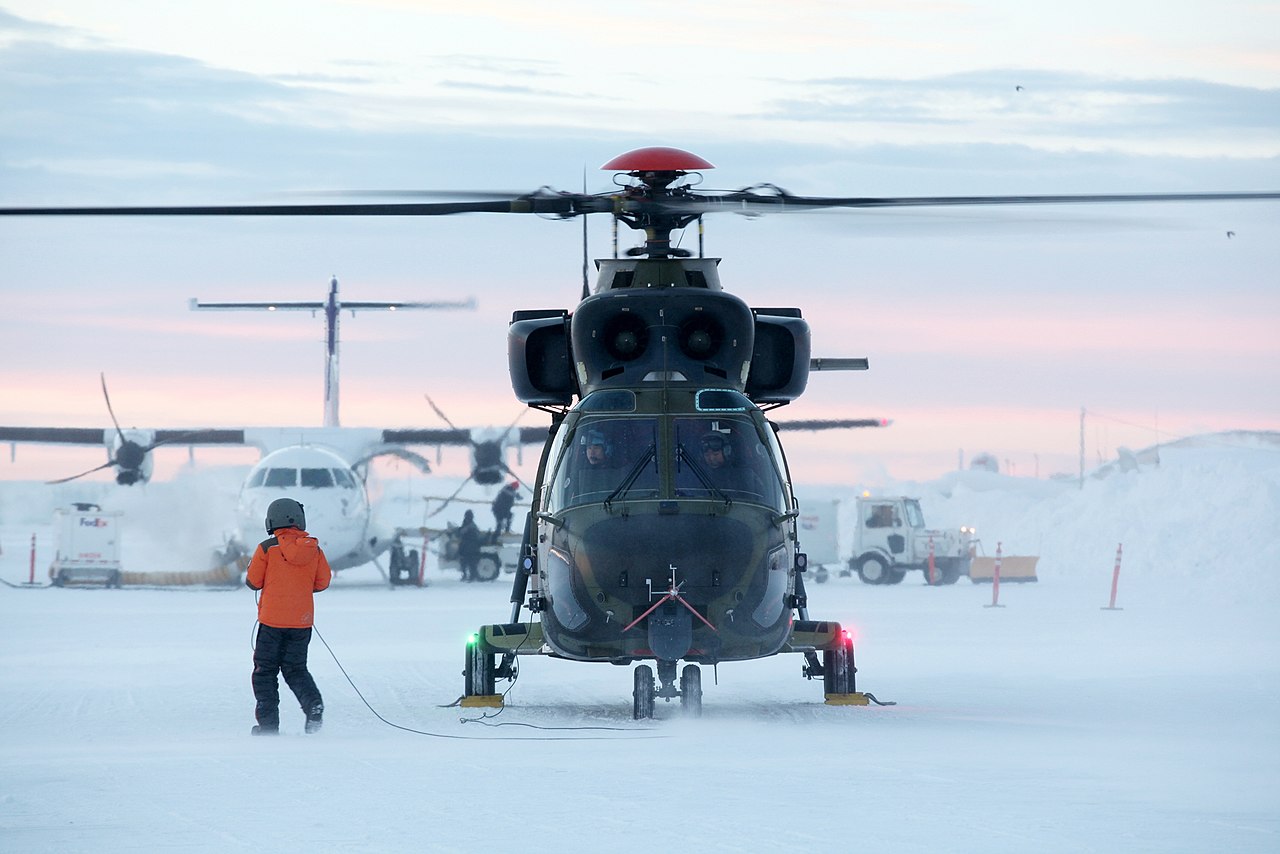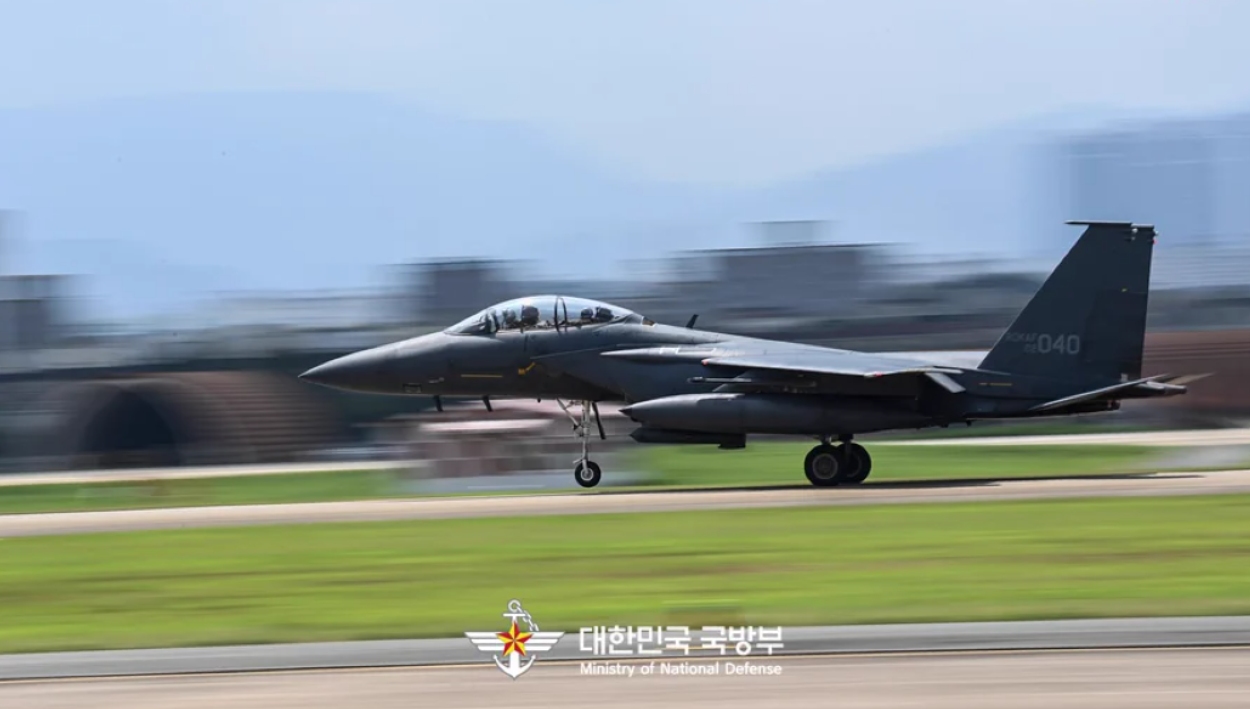South Korea’s burgeoning aerospace industry appears to be moving towards securing its first overseas customer for the domestically manufactured Korea Aerospace Industries Ltd. (KAI) KUH-1 helicopter.
On March 13, Yonhap, a leading South Korean news agency, citing sources, reported that a high-ranking Iraqi Army official visited South Korea recently to evaluate a domestically manufactured utility helicopter, sparking speculation regarding Iraq’s interest in acquiring the aircraft.
Lt. Gen. Samir Zaki Hussein Al-Maliki, commander of Iraq’s Army Aviation Command, accompanied by other Iraqi military personnel, embarked on a visit to South Korea commencing March 4, during which they engaged with representatives from South Korean military entities and defense corporations.
During his stay, the Iraqi general toured the facilities of Korea Aerospace Industries Ltd. (KAI) in Sacheon, approximately 296 kilometers southeast of Seoul, to assess the company’s KUH-1 helicopter, the Surion.
He witnessed the operations of a midsize variant of the Surion, designated as KUH-1CG, tailored for the Coast Guard, and even boarded the aircraft for closer examination.

The senior Iraqi Army official also took a flight aboard the domestically developed KUH-1 Surion helicopter en route to KAI’s headquarters in Sacheon. The KUH acronym denotes Korean Utility Helicopter.
In addition to his visit to KAI, the general’s itinerary included meetings with South Korean Defense Minister Shin Won-sik and visits to various major defense enterprises.
The visit signifies a notable advance, especially considering Iraq’s purported contemplation of obtaining small reconnaissance helicopters to safeguard its oil pipelines against potential risks.
Iraq is familiar with the performance of South Korea’s defense equipment. In 2013, Iraq agreed to purchase 24 units of the FA-50, referred to in Iraq as the T-50IQ.
This domestically developed light attack aircraft was intended to support the rebuilding of Iraq’s air force, which had experienced substantial losses during the Saddam Hussein era due to military actions by the US.
Meanwhile, Korea JoongAng Daily reported that Iraqi Air Defense Command Commander Mohanad Ghalib Mohammed also familiarized himself with the Cheongung-II missile defense systems.
Saudi Arabia and the United Arab Emirates have previously procured this missile defense system in multibillion-dollar deals, highlighting South Korea’s growing presence in the Middle East’s defense market.
The Cheongung-II system, a domestically developed medium-range surface-to-air missile (M-SAM) system, is designed to intercept ballistic missiles at altitudes between 15 and 40 kilometers.
KAI KUH-1 Surion Struggles
The KAI KUH-1 Surion is a twin-engine transport utility helicopter primarily developed by Korea Aerospace Industries (KAI) in collaboration with the Agency for Defense Development (ADD), Korea Aerospace Research Institute (KARI), and Eurocopter.
Designed as a twin-engine, medium-sized multipurpose helicopter, the KAI KUH-1 Surion boasts versatility in its capabilities.

With a capacity to transport up to nine troops and a crew of four, including two pilots and two gunners, the Surion serves various roles ranging from military transport to law enforcement, aerial observation, search and rescue, maritime support, and even aerial firefighting.
Its adaptable design allows for swift reconfiguration to suit different mission requirements, making it an attractive option for defense forces and civilian agencies alike.
Currently, the Surion is in operation across several sectors within South Korea, including the Republic of Korea Army, the Republic of Korea Marine Corps, the National Police Agency, the Korea Forest Service, the Jeju Fire Department, the Korea Coast Guard, and within KAI itself. However, despite its domestic success, the true test lies in its ability to penetrate international markets.
In late 2013, KAI received requests for proposals from two South American nations and an Asian nation expressing interest in the Surion. At that time, KAI anticipated selling between 60 to 120 helicopters over the following 15 to 20 years.
However, despite these promising leads, no deals materialized. In January 2019, attempts to secure a deal with the Philippines fell through, with the Philippine Air Force ultimately opting for the Sikorsky UH-60 Black Hawk instead.
In a subsequent development, during the Dubai Airshow in November last year, Cho Seok Joon, a senior manager within KAI’s rotorcraft division, disclosed discussions with the UAE regarding the procurement of KUH-1E helicopters.
Despite optimism, no deal was finalized by the end of the year, raising doubts about the Surion’s potential for international success, particularly when compared to South Korea’s booming FA-50 fighter jet in global markets.
The FA-50/T-50 lineup, known for its advanced capabilities in both jet training and light combat roles, has garnered substantial acclaim in the global market.
Presently, it serves in the Air Forces of Indonesia, the Philippines, Thailand, Iraq, Poland, and South Korea. Adding to its accolades, Malaysia has joined the list of buyers, with initial deliveries slated for 2026.

Moreover, Korea Aerospace Industries (KAI) is actively vying for the top spot as the preferred bidder in Egypt’s ambitious endeavor to locally manufacture lightweight fighters in a partnership with a foreign company.
Seoul’s aspirations extend further. It contemplates creating a single-seat version of this fighter aircraft to amplify its export ventures.
Nonetheless, the possibility of Iraq entering into a deal to procure the Surion in the future presents a glimmer of hope. Such a move would not only bolster the Surion’s standing in the international market but also add to South Korea’s growing list of domestically developed defense systems that have achieved success abroad.
- Contact the author at ashishmichel(at)gmail.com
- Follow EurAsian Times on Google News




